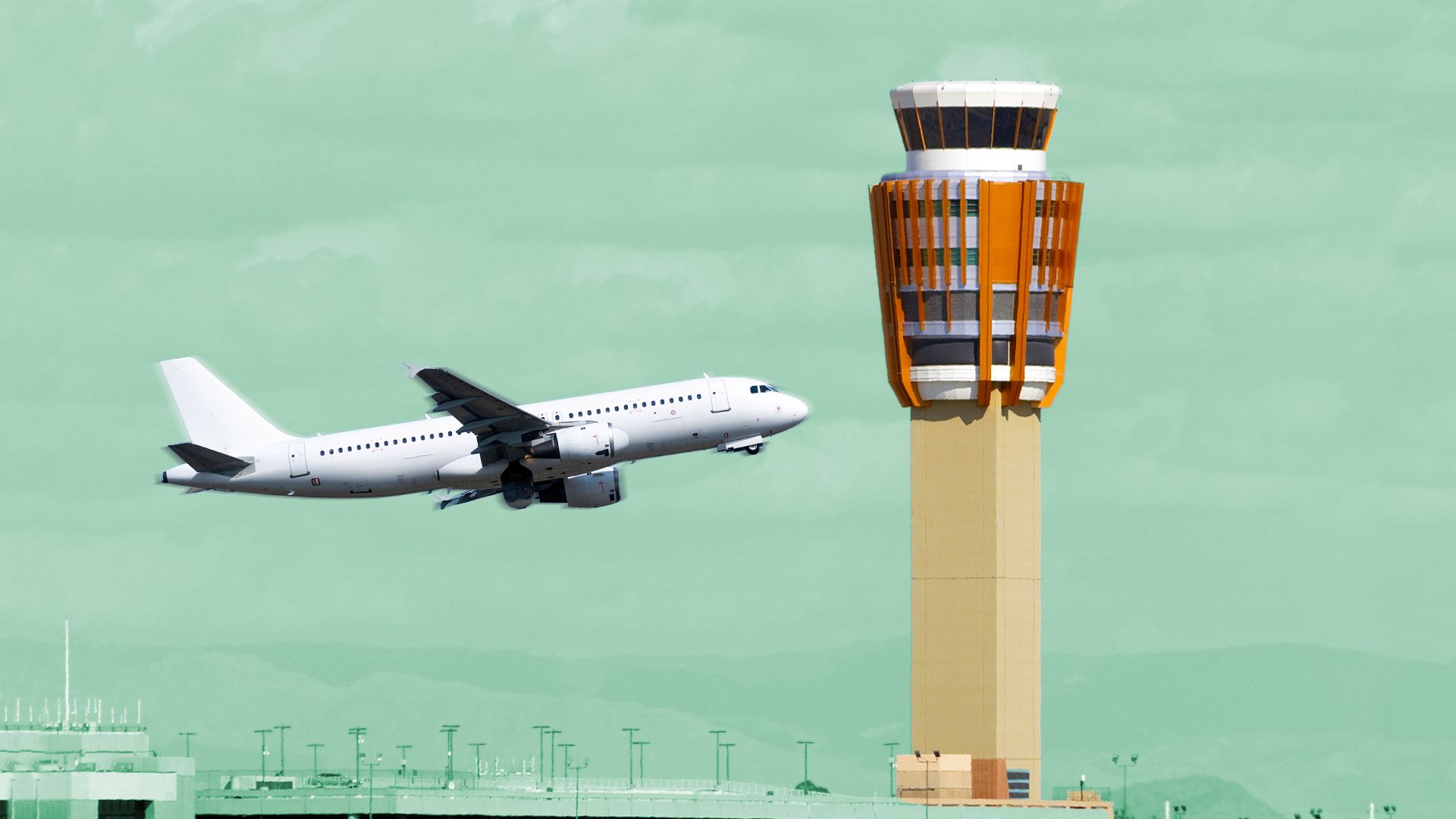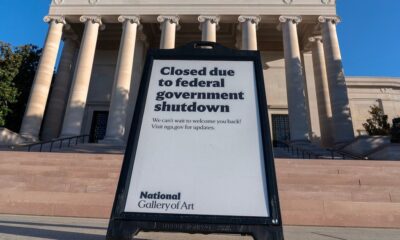World
US Air Traffic Control Faces Severe Staffing Crisis as Demand Soars

The United States aviation system is grappling with a significant shortage of air traffic controllers, a challenge exacerbated by a lack of qualified instructors to train the next generation. Currently, more than 3,000 air traffic controller positions remain unfilled, creating operational pressures that impact safety and efficiency across the industry. The Federal Aviation Administration (FAA) is under increasing pressure to address this crisis, with a pressing need for solutions that not only resolve instructor shortages but also enhance overall training capacity.
The Scale of the Shortage: Understanding the Instructor Gap
According to the Washington Post, the dual crisis in air traffic control staffing stems from both a shortage of certified controllers and a scarcity of instructors who can train them. The FAA’s primary training hub, the Oklahoma City Academy, is operating at full capacity but still cannot meet the increasing demand for controllers. In September 2025, the FAA initiated larger trainee classes, including a record intake of 600 students, nearly double the usual size. However, the throughput at the academy is largely limited by the availability of classroom space, training simulators, and, critically, qualified instructors.
Current demographics reveal that a significant proportion of instructors are older, with many in the 50–69 age range and a notable number over 70. This aging workforce poses a risk, as a wave of retirements could drastically impact training capacity. Reports indicate that instructors are often overworked, with some taking on double shifts or working up to 17 hours a day. The low morale among instructors is compounded by hiring practices that often involve contractors like Science Applications International Corp (SAIC), who typically earn less than FAA employees, making recruitment and retention increasingly challenging.
Breaking Down the Training Pipeline
Becoming a certified air traffic controller is a lengthy and rigorous process. Candidates must first pass the Air Traffic Skills Assessment (ATSA) and meet strict medical and security standards before undergoing months of intensive training at the FAA Academy. This is followed by an additional two to four years of on-the-job training at assigned facilities.
The bottleneck appears at several critical points. The FAA Academy can train approximately 1,500–1,800 students annually at full capacity. However, this output falls short of the 1,800–2,000 controllers needed each year to meet demand, including replacements for retirements and the expected growth in air traffic. Infrastructure limitations and a 20–30% trainee washout rate further reduce effective output to around 1,200–1,400 certified controllers annually.
The shortage of instructors, estimated at 15–20%, restricts class sizes to 10–12 students and limits the quality of one-on-one instruction. Despite the FAA’s efforts to introduce incentives and partnerships with universities, the availability of instructors remains a significant challenge. Additionally, understaffed facilities, operating at 60–80% of required levels, struggle to allocate certified controllers for on-the-job training, delaying trainee certification by anywhere from six months to three years.
The compensation structure also plays a crucial role in shaping the controller pipeline. While fully certified controllers enjoy comparatively high salaries, the pay during the training period is relatively modest, creating a disparity that may deter potential recruits. Typical pay progression from trainees to top-earning controllers is as follows:
– FAA Academy Trainee: $37,000 – $45,000
– On-the-Job Training (Facility): $50,000 – $75,000
– Median Certified Controller: $103,000
– Top Earners (Complex Facilities): $150,000+
Despite initiatives like the Enhanced Air Traffic Collegiate Training Initiative (AT-CTI), which allows universities to provide equivalent training, the transition from classroom learning to operational readiness remains slow due to insufficient instructor availability.
Safety and Efficiency Risks Amid Staffing Shortages
The ongoing shortage of air traffic controllers poses significant risks to safety and operational efficiency. With thousands of additional controllers needed, facilities are often mandated to require overtime, which can lead to reduced air traffic capacity. Reports indicate that some control towers operate with only two controllers on duty when four are needed, increasing the likelihood of operational errors.
Fatigue is a growing concern, with many controllers working overtime shifts that can extend up to 10 hours each. This strain is particularly pronounced in congested airspace such as New York, where the FAA has already capped flights due to staffing issues. Investigators are currently examining whether inadequate staffing contributed to a tragic air collision in January 2025, highlighting the potential consequences of overworked staff.
The historical context of this crisis reveals a pattern of underinvestment in training capacity over decades. Since 2010, the FAA’s controller workforce has declined by nearly 2,000 employees, a 13% reduction, largely due to retirements, attrition, and hiring freezes during government shutdowns and the COVID-19 pandemic. The reliance on the Oklahoma City Academy as the sole gateway into the profession has created a single point of failure, resulting in widespread training disruptions.
Policy and Industry Efforts to Address the Crisis
Recognizing the urgency of the situation, both Congress and the administration are supporting measures to accelerate hiring and expand training capacity. These efforts include streamlining application processes, offering incentive pay for hard-to-staff facilities, and providing bonuses for trainees who successfully complete their training programs. The FAA’s Enhanced AT-CTI program is pivotal in these reforms, allowing colleges to deliver training that mirrors that of the academy, thereby decentralizing training and potentially doubling throughput.
Yet, scaling these programs hinges on the recruitment of more instructors, a challenge exacerbated by low pay and demanding hours. Industry experts caution that without sustained funding and improved working conditions for instructors, these initiatives may fail to achieve their intended impact.
International comparisons further underscore the stakes. Countries like NAV Canada have modernized their training approaches with advanced simulators and university partnerships. Meanwhile, Europe’s Eurocontrol has developed a harmonized training system across member states. In contrast, the US has been slower to decentralize and modernize its training framework, which could jeopardize its competitive edge in global aviation.
Looking Ahead: The Future of Air Traffic Control Training
Addressing the instructor shortage will require a multifaceted approach. Solutions must include increasing pay and benefits, expanding decentralized training programs, leveraging technology, and improving retention among current controllers to lessen the training burden. Experts estimate that it could take between five to ten years to fully rectify staffing imbalances, even with aggressive hiring strategies.
In the interim, airlines and passengers will need to adapt to a system operating under significant strain, with potential delays and reduced capacity. However, advancements in technology present both challenges and opportunities. Innovations such as virtual reality simulators could offer flexible, decentralized training options, while AI-powered instruction could enhance mentorship efficiency. Remote tower technology, already in use in countries like Sweden and the UK, could alleviate staffing pressures at smaller airports.
The implications of the current crisis are profound. Air traffic control is not merely an operational function; it is the essential infrastructure that maintains the safety, efficiency, and competitiveness of the nation’s airspace. Without a sufficient number of instructors to train the next generation of controllers, the US risks falling behind in global aviation standards, potentially leading to more frequent delays and compromised safety. The path forward necessitates sustained investment, innovative training models, and a renewed commitment to valuing the expertise of those responsible for guiding aircraft through America’s skies.
-

 World3 months ago
World3 months agoScientists Unearth Ancient Antarctic Ice to Unlock Climate Secrets
-

 Entertainment3 months ago
Entertainment3 months agoTrump and McCormick to Announce $70 Billion Energy Investments
-

 Science3 months ago
Science3 months agoFour Astronauts Return to Earth After International Space Station Mission
-

 Lifestyle3 months ago
Lifestyle3 months agoTransLink Launches Food Truck Program to Boost Revenue in Vancouver
-

 Technology2 months ago
Technology2 months agoApple Notes Enhances Functionality with Markdown Support in macOS 26
-

 Top Stories1 week ago
Top Stories1 week agoUrgent Update: Fatal Crash on Highway 99 Claims Life of Pitt Meadows Man
-

 Sports3 months ago
Sports3 months agoSearch Underway for Missing Hunter Amid Hokkaido Bear Emergency
-

 Politics2 months ago
Politics2 months agoUkrainian Tennis Star Elina Svitolina Faces Death Threats Online
-

 Technology3 months ago
Technology3 months agoFrosthaven Launches Early Access on July 31, 2025
-

 Politics3 months ago
Politics3 months agoCarney Engages First Nations Leaders at Development Law Summit
-

 Entertainment3 months ago
Entertainment3 months agoCalgary Theatre Troupe Revives Magic at Winnipeg Fringe Festival
-

 Politics1 week ago
Politics1 week agoShutdown Reflects Democratic Struggles Amid Economic Concerns





















